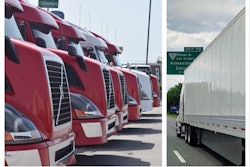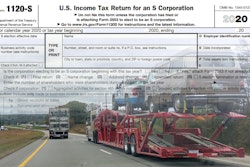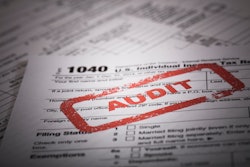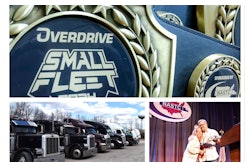Per diem is the tax-deductible amount the IRS assumes you spend on meals, beverages and tips when you’re away from home on an overnight business trip -- there are certainly many of those for both over-the-road truck owner-operators and company drivers.
Yet the Tax Cuts and Jobs Act (TCJA), effective as of Jan. 1, 2018, disallowed an employee deducting unreimbursed business expenses as an itemized deduction on Schedule A. Thus, for company drivers, per diem is considered an unreimbursed business expense and therefore no longer deductible. The only way a company driver can benefit from per diem under the TCJA is if the carrier reimburses per diem as part of the driver’s pay on the driver's W-2.
For owner-operators, though, per diem is an ordinary and necessary business expense. It’s reported not as an itemized deduction but as a business expense on Schedule C. It directly reduces the self-employment taxes and income taxes owed on the return.
It’s important to realize that in a normal year, you can’t deduct your total per diem from your tax bill dollar for dollar. But owner-operators still can deduct 80% of the total per diem of $80 a day (boosted from $69 per day as of October 1, 2024), or $64.

There’s the option of direct expense deductions, yet meals are deductible at only a 50% rate, so an owner-operator would have to consistently spend more than $128 per day to exceed the per diem’s $64 (80% of the $80) daily deduction.
To claim the per diem on any trip, you must be away from home for the night, which you can prove through your logs. A trucker who leaves the terminal before dawn, works a 14-hour day and then returns that night has worked for a day, but not in a way that qualifies for the per diem deduction.
IRS publication 463 states that drivers are traveling from home if:
- The driver’s duties require them to be away from the general area of their tax home substantially longer than an ordinary day's work.
- The driver needs to sleep or rest to meet the demands of their work while away from home.
[Related: IRS boosting truckers' per-diem deduction rate for 2025]
Using equipment depreciation to reduce your tax bill
The standard depreciation for a Class 8 truck, commonly called “straight-line” depreciation, is roughly an evenly paced three-year deduction that’s spread over four tax years: year one, 17% of the cost of the truck; years two and three, 33% each; then 17% again in year four.
Also common is a variation of the four-year formula known as accelerated depreciation, which ATBS notes the vast majority of owner-operators are using today. It takes 77% of the equipment’s value in the first two years, and 23% in the final two.
As a result of the TCJA legislation, an owner-operator could have chosen to deduct 100% of truck and trailer purchases until the end of 2022. Starting in 2023, though, this bonus depreciation deduction began to dwindle 20% each year, ongoing through 2026, and it’s eliminated in 2027 under current rules. In 2025, the bonus depreciation deduction is set at just 40% for equipment purchases, and 20% in 2026. It can only be claimed in the year the equipment was purchased.
Another change made under the new tax law is that bonus depreciation can be used for both used and new assets. Under the previous tax law, bonus depreciation was allowed only on new assets.
Should equipment expenses exceed operators’ income for the year, likely for the year a new Class 8 truck is bought, the bonus depreciation deduction cuts income to zero. The new legislation allows such an owner-operator to carry that loss forward into the next year, which could help lower their tax bill for that year and even subsequent years. With the bonus depreciation rate continuing to fall this year, however, owner-operators are likely returning to using typical accelerated depreciation deductions most often.
While a truck or trailer purchase is depreciable (trailers are generally depreciated on a five-year schedule), many owner-operators fail to realize that large repairs/rebuilds/component replacements on either piece of equipment can be treated just like the assets themselves and thus depreciated -- with deductions taken over years. Generally, improvements to a piece of depreciable property are depreciated on the same schedule length as the base property itself (three years for trucks, and five for trailers).
The de minimis safe harbor provision of the tax code allows a business to simply expense such improvements up to the $2,500 level, but you don't have to take that route. This covers rebuilt transmissions or engines or other big-ticket, non-wear items. (None of this applies to tires, for instance.) Depreciating the repair or replacement could allow a measure of control over the amount of your deductions year to year that could maximize deductions over time.
[Related: Big-ticket repairs, replacements, rebuilds: To depreciate or not to depreciate?]
Too many owner-operators tend to focus solely on the right now when it comes to tax savings during a year with a lot of qualifying repairs or refurbishments, or purchases, to zero out income. ATBS notes it never recommends that, rather urging owner-operators stay at an income level within the 10 percent bracket.
There is a way to use expensing and bonus depreciation, though, to minimize tax liability that often applies to an owner-operator with a spouse filing jointly -- where it looks like the pair are going to jump into the next tax bracket and pay more than 20% in income tax. Using as much expensing or depreciation as possible upfront in the first year could save a lot on the final return.
Usually, though, zeroing out your income by gorging on expense deductions is a short-sighted strategy -- you’re missing out on other qualifying deductions, which you'll never get back. When you show zero income, too, you’ve hamstrung yourself as it relates to future Social Security benefits, which take earnings into account. Low income on a lot of revenue raises the likelihood of an audit, too.
Accelerating depreciation, thus, is no magic bullet. It’s not for everyone, given it could speed up the higher tax bills that come when depreciation runs out. As suggested, that also could move the taxpayer into a higher tax bracket. Too many owner-operators have used a similar tactic attempting to catch up after they’ve failed to make their estimated quarterly tax payments.
Owner-operators with a full tank of financial self-discipline can use bonus depreciation to zero out tax bills as long as possible while also diligently saving enough each year -- typically 8% of gross revenue -- for the inevitable day the IRS comes calling.
Tax Myth
and Tax Reality
“In the year you start your business, you will owe no tax.”
This is not true, especially if you are leasing your truck.
“You will get a big refund your first year.”
You potentially can get a refund to the extent of taxes paid. Example: If your withholding as a company driver was $100 before you became an owner-operator, and you paid no additional taxes during the year, the most you normally can receive as a refund is $100.
“You should be incorporated.”
Not necessarily. Incorporation only makes sense when the tax savings are greater than the additional costs. (For more, see this part of PIB about choosing your business' structure.)
“You don’t have to make estimated tax payments.”
Payments are required quarterly.
“‘Tax-deductible’ or ‘writeoff’ means getting something free.”
Most of the time it reduces your federal taxes only from between 15% and 30% of the value of the item purchased.
“You can deduct deadhead mileage and days off because of illness.”
Because you deduct only your actual expenses while working and are taxed only on the profit you make while working, you’re already getting a deduction for deadhead and time off.
“You can deduct the cost of your dog.”
Generally, the dog is deductible, as a security measure, as long as it is part of the trucking operation. Typically this means that the dog lives in the truck and is always with the truck.
“You can deduct out-of-route miles.”
You deduct your actual expenses while working, which already includes out-of-route miles, as with deadhead, and you can’t deduct anything twice.
“You can deduct the standard mileage rate for every mile you run.”
For owner-operators, the IRS considers a semi-truck to be a qualified non-personal-use vehicle, which means mileage cannot be deducted as a part of business expenses. A taxpayer must use actual expenses.
“You can deduct tips for maintenance, tire changes, repairs, etc.”
Only if you actually pay the tip. Falsely claiming tips is fraud.
“You can negotiate a deal with the IRS to pay back taxes at a few cents on the dollar.”
Such deals, called offers in compromise, may be granted in extreme cases and are based on your ability to pay.
Read next: Truck lease v. truck purchase: A tax analysis











